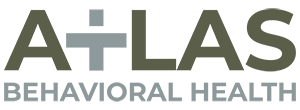Meth detox is the first step toward recovery, but it comes with challenges. Withdrawal symptoms like fatigue, anxiety, and intense cravings can make quitting feel overwhelming. Without the right support, relapse is common.
The good news is if you’re here, you’re acknowledging these behaviors and you’re ready for a deep transformation.
Understanding the detox process helps you prepare for what to expect and how to manage symptoms. Detoxing safely—whether through medical supervision or structured support—can reduce discomfort and increase the chances of long-term recovery.
If meth use has become unmanageable, professional treatment can provide the guidance needed to break free. This guide covers what happens during detox, the withdrawal timeline, and the safest ways to start your recovery journey.
Understanding Meth Detox
Meth detox happens when the drug leaves your system, triggering withdrawal symptoms.
Unlike opioids or alcohol, meth withdrawal isn’t usually life-threatening, but it can be physically and mentally exhausting.
Symptoms can last for days or weeks, depending on how long and how much a person has been using.
During detox, the brain struggles to function without meth’s artificial dopamine surges.
This leads to severe fatigue, depression, mood swings, and powerful cravings. Some people also experience paranoia or hallucinations, especially if they’ve used meth for a long time.
Meth detox differs from other substances because withdrawal symptoms are mostly psychological.
Unlike alcohol or benzodiazepines, which can cause seizures or fatal complications, meth detox primarily affects mental health and energy levels.
However, the risk of suicidal thoughts, dehydration, and extreme exhaustion makes medical supervision a safer option.
A 35-year-old man described his detox experience as “feeling like my body was shutting down.” He slept for nearly two days straight, followed by severe depression and cravings. Without a support system, he relapsed within a week. His second attempt, under medical supervision, gave him the structure he needed to stay sober.
How Meth Affects the Body and Brain
Meth impacts nearly every system in the body. Short-term use causes euphoria, increased energy, and alertness, but the long-term effects are severe and often irreversible.
Short-term effects of meth use:
- Increased heart rate and blood pressure
- Decreased appetite and rapid weight loss
- Intense focus and hyperactivity
- Anxiety, paranoia, or aggression
With chronic use, meth damages the brain’s dopamine system, making it harder to feel pleasure without the drug. This leads to depression, anxiety, and intense cravings, making detox even more difficult.
Long-term damage from meth use:
- Severe dental problems (“meth mouth”)
- Cognitive impairment and memory loss
- Heart damage and increased stroke risk
- Psychosis, including paranoia and hallucinations
Detoxing from meth doesn’t instantly reverse this damage. Many people struggle with low energy, mood swings, and cognitive issues for months after quitting. However, with proper treatment and time, the brain can start to heal.
A 29-year-old woman shared how meth use wrecked her physical health. She lost over 40 pounds, developed skin sores, and suffered panic attacks daily. After detox, she slowly regained weight and saw improvements in her mental health. While recovery wasn’t easy, she said, “I finally feel human again.”
How to Prepare for Meth Detox
Detoxing from meth can be overwhelming, but preparation can make the process smoother. Having a plan in place increases the chances of success and reduces the risk of relapse.
Steps to take before detoxing:
- Decide on a detox setting – Medical detox provides 24/7 support, while at-home detox requires a strong support system.
- Clear your schedule – Withdrawal symptoms can make it difficult to work, drive, or focus. Taking time off is ideal.
- Stock up on essentials – Have hydrating drinks, healthy food, and comfort items ready to help manage withdrawal.
- Tell a trusted person – Whether it’s a friend, family member, or therapist, having support can make a huge difference.
- Prepare for cravings – Create a relapse prevention plan, including healthy distractions and emergency contacts.
If detoxing at home, safety is key. Withdrawal can cause severe depression and suicidal thoughts, so never go through it alone. If symptoms become unmanageable, seek medical help immediately.
A 41-year-old man shared how his first detox attempt failed because he wasn’t prepared. He still had meth in the house, felt overwhelmed, and relapsed within days. The second time, he entered a detox program, had professional guidance, and successfully moved into long-term treatment. Having a plan saved his life.
Meth Withdrawal Symptoms
Meth withdrawal is intense, both physically and mentally. While the symptoms aren’t usually life-threatening, they can be severe enough to lead to relapse without proper support.
Common physical symptoms:
- Extreme fatigue and excessive sleeping
- Increased appetite and intense hunger
- Headaches, muscle pain, and sweating
- Chills and flu-like discomfort
Common psychological symptoms:
- Depression and suicidal thoughts
- Anxiety and restlessness
- Intense drug cravings
- Psychosis (paranoia, hallucinations) in severe cases
Symptoms can start within 24 hours of the last use and peak within the first 3-10 days. Some effects, like low motivation and mood swings, can last for months.
A 36-year-old woman described her withdrawal as “feeling like my body shut down” for a week. She experienced severe depression and nonstop cravings. The turning point came when she entered a detox program, where professionals helped her manage symptoms and stay sober.
The Meth Detox Timeline
Meth detox happens in stages, with symptoms peaking and then gradually fading. Understanding the timeline can help set realistic expectations for recovery.
First 24-48 hours (Crash Phase):
- Extreme exhaustion
- Depression and mood swings
- Increased hunger
Days 3-10 (Acute Withdrawal):
- Intense cravings for meth
- Anxiety, agitation, and restlessness
- Body aches and flu-like symptoms
Weeks 2-4 (Recovery Phase):
- Cravings begin to decrease
- Sleep patterns start normalizing
- Emotional stability improves gradually
Beyond a month (Protracted Withdrawal):
- Lingering depression and low motivation
- Occasional cravings in high-risk situations
- Slow cognitive and emotional recovery
A 28-year-old man who went through detox shared that the first week felt unbearable, but by week three, he started feeling like himself again. With therapy, support groups, and time, he gradually rebuilt his life without meth.
The Role of Nutrition in Meth Detox and Recovery
Meth use depletes essential nutrients, leading to severe malnutrition, weakened immunity, and extreme fatigue during detox. Restoring proper nutrition helps the body heal and reduces withdrawal symptoms.
How meth affects nutrition:
- Suppresses appetite, leading to dangerous weight loss
- Depletes dopamine and serotonin, increasing depression and anxiety
- Strains the liver and kidneys, making detox harder
Best foods for meth detox:
- Protein-rich foods (chicken, eggs, beans) to rebuild muscles and brain function
- Healthy fats (avocados, nuts, olive oil) to support energy levels
- Fruits and vegetables for vitamins and antioxidants
- Whole grains (brown rice, quinoa, oats) to regulate blood sugar and cravings
- Plenty of water to flush toxins and prevent dehydration
A 30-year-old woman in recovery said she felt “like a zombie” after quitting meth. She started eating balanced meals, and within weeks, her energy improved. While cravings persisted, she felt stronger and more in control.
Proper nutrition isn’t a cure for addiction, but it plays a key role in physical and emotional recovery.
The Safest Ways to Detox from Meth
Meth detox can be dangerous without proper support. The safest way to detox depends on how long and how much a person has been using.
Medical detox vs. at-home detox:
- Medical detox: Provides 24/7 monitoring, medications for withdrawal symptoms, and a structured environment
- At-home detox: This is not recommended for any case, though we acknowledge some have pulled it off (with strong support and emergency backup).
Why quitting cold turkey can be risky:
- Severe depression and suicidal thoughts can develop suddenly
- Cravings are strongest in the first few days, leading to relapse
- Dehydration and malnutrition can worsen symptoms
A 38-year-old man tried to quit meth cold turkey at home but relapsed after three days due to crippling anxiety and exhaustion. The second time, he chose a medical detox program, where professionals helped him stabilize and transition into treatment.
Detox is just the first step. Professional support increases the chances of lasting recovery and reduces health risks.
Managing Meth Withdrawal Symptoms
Meth withdrawal can feel terrible and overwhelming. But there are effective ways to reduce discomfort and stay on track.
How to cope with cravings:
- Distraction techniques – Engage in hobbies, exercise, or talk to a friend
- Healthy snacks – Keep nutritious foods available to prevent blood sugar crashes
- Support groups – Surround yourself with people who understand withdrawal challenges
How to ease physical symptoms:
- Stay hydrated – Drink water, herbal tea, and electrolyte-rich drinks
- Rest when needed – Withdrawal causes extreme fatigue, so allow your body to recover
- Gentle movement – Light exercise like stretching or walking can boost energy
Managing mental health during detox:
- Talk to a professional if depression or anxiety becomes unmanageable
- Practice deep breathing and mindfulness to reduce stress
- Remind yourself that symptoms are temporary
A 25-year-old woman who went through detox shared that her cravings were unbearable at first, but having a structured routine, therapy, and a support system helped her push through.
With the right strategies and support, withdrawal becomes more manageable, making long-term sobriety possible.
When Meth Use Affects Mental Health
Meth doesn’t just affect the body—it has a profound impact on mental health. Many people use meth to escape anxiety, depression, or trauma, but over time, it worsens these conditions and creates new challenges.
How meth affects mental health:
- Increases anxiety and paranoia – Overuse can trigger intense fear and mistrust, even in familiar environments.
- Causes severe depression – Long-term meth use depletes dopamine and serotonin, making it hard to feel happiness without the drug.
- Can lead to psychosis – Some users experience hallucinations, delusions, and violent mood swings.
Why dual diagnosis treatment may be necessary:
- Many people with underlying mental health disorders use meth as a coping mechanism.
- Treating only addiction without addressing mental health leads to relapse.
- A combination of therapy, medication, and lifestyle changes gives the best chance of long-term recovery.
A 32-year-old man shared that meth helped him escape his depression—until it made everything worse. He began hearing voices and feeling like he was being watched. When he entered a dual diagnosis program, he finally got the support he needed to address both his addiction and mental health.
Recovery isn’t just about quitting meth—it’s about healing the mind and body together.
The Importance of Professional Treatment
Detoxing alone is difficult, and for many, it leads to relapse, health risks, and worsening mental health. Professional treatment provides structure, safety, and long-term support to help people stay sober.
Benefits of supervised detox programs:
- Medical monitoring – Reduces withdrawal risks and ensures proper care.
- Emotional support – Trained professionals help manage depression, anxiety, and cravings.
- Smoother transition to rehab – Detox is just the first step—treatment helps build a strong foundation for recovery.
Therapy options for meth addiction:
- Cognitive Behavioral Therapy (CBT) – Helps rewire thoughts and behaviors around drug use.
- Contingency Management – Uses rewards to reinforce sobriety and healthy habits.
- Group therapy – Builds a support system with others in recovery.
A 40-year-old woman who struggled with meth addiction said detoxing alone felt impossible. She entered a professional treatment program, where therapy and structure helped her rebuild her life. Today, she’s three years sober and working to help others in recovery.
Professional treatment doesn’t just help people quit meth—it gives them the tools to stay sober and thrive.
What to Expect After Detox
Detox is a major milestone, but it’s only the beginning. The real work starts after withdrawal symptoms fade, as the brain and body adjust to life without meth.
How to transition into recovery:
- Consider inpatient or outpatient rehab – Structured programs provide therapy, support, and relapse prevention strategies.
- Build a sober routine – Establish healthy habits like exercise, nutrition, and stress management.
- Find a support system – Recovery is easier with friends, family, and sober communities.
Avoiding relapse triggers:
- Stay away from high-risk environments – Avoid places, people, or situations linked to drug use.
- Develop coping mechanisms – Learn how to manage stress, boredom, and cravings in healthy ways.
- Set long-term goals – Focus on work, relationships, and hobbies that reinforce a sober lifestyle.
A 27-year-old man who relapsed after detox said he “thought he was fine” but fell back into old habits. The second time, he enrolled in outpatient treatment, built a sober support network, and stayed committed to his long-term goals. This time, he stayed clean.
Long-term recovery takes time, but with the right support, it’s possible to rebuild a fulfilling, sober life.
How Our Atlanta Treatment Center Can Help
Recovery doesn’t have to be done alone. At Atlas Behavioral Health, we provide personalized treatment plans to help individuals detox safely and build a strong foundation for long-term sobriety.
What we offer:
- Medical detox with 24/7 support to manage withdrawal symptoms.
- Evidence-based therapy to address addiction and mental health challenges.
- Outpatient and inpatient programs tailored to individual recovery needs.
If you or a loved one is struggling with meth addiction, help is available. Contact us today to learn more about our treatment options and take the first step toward a healthier future.





